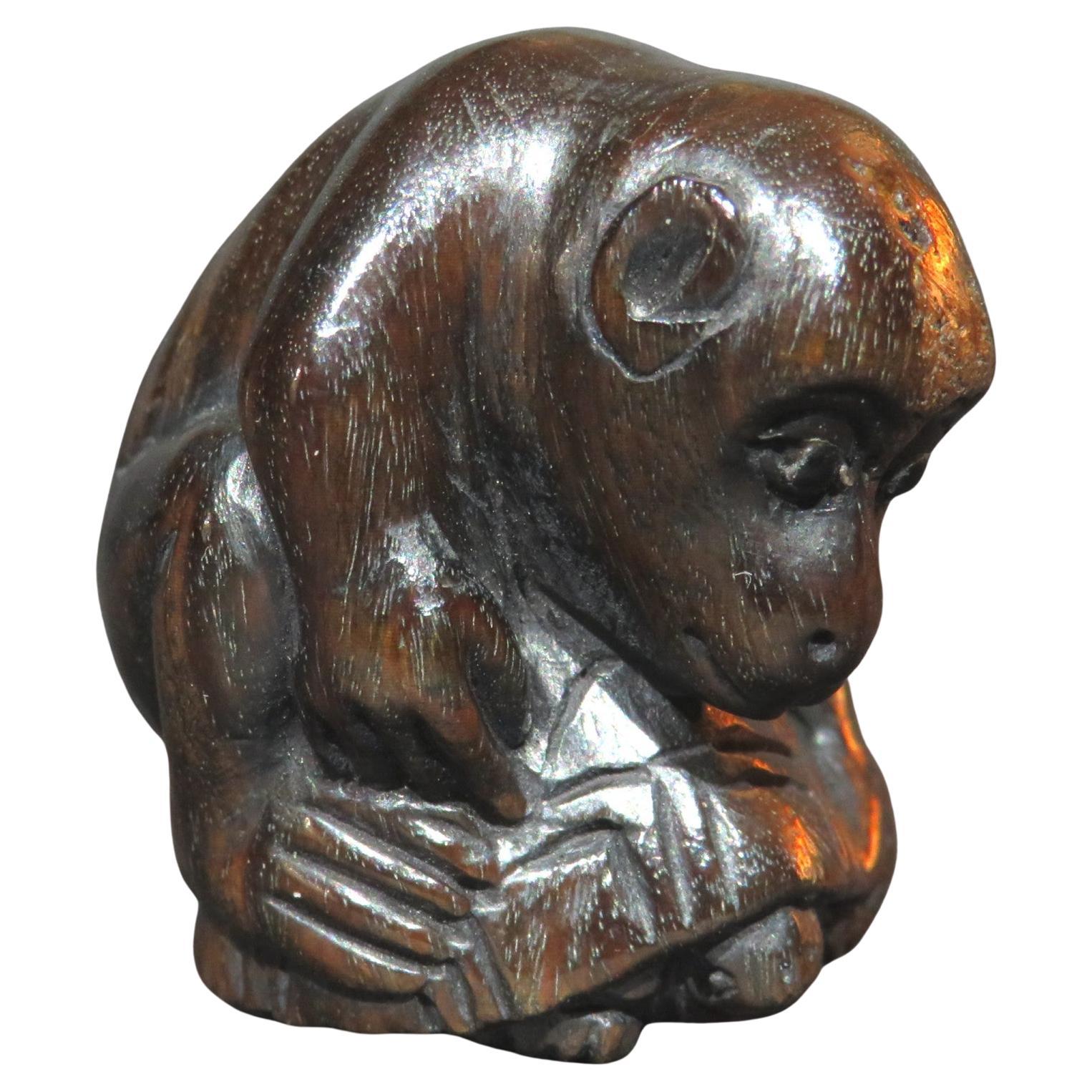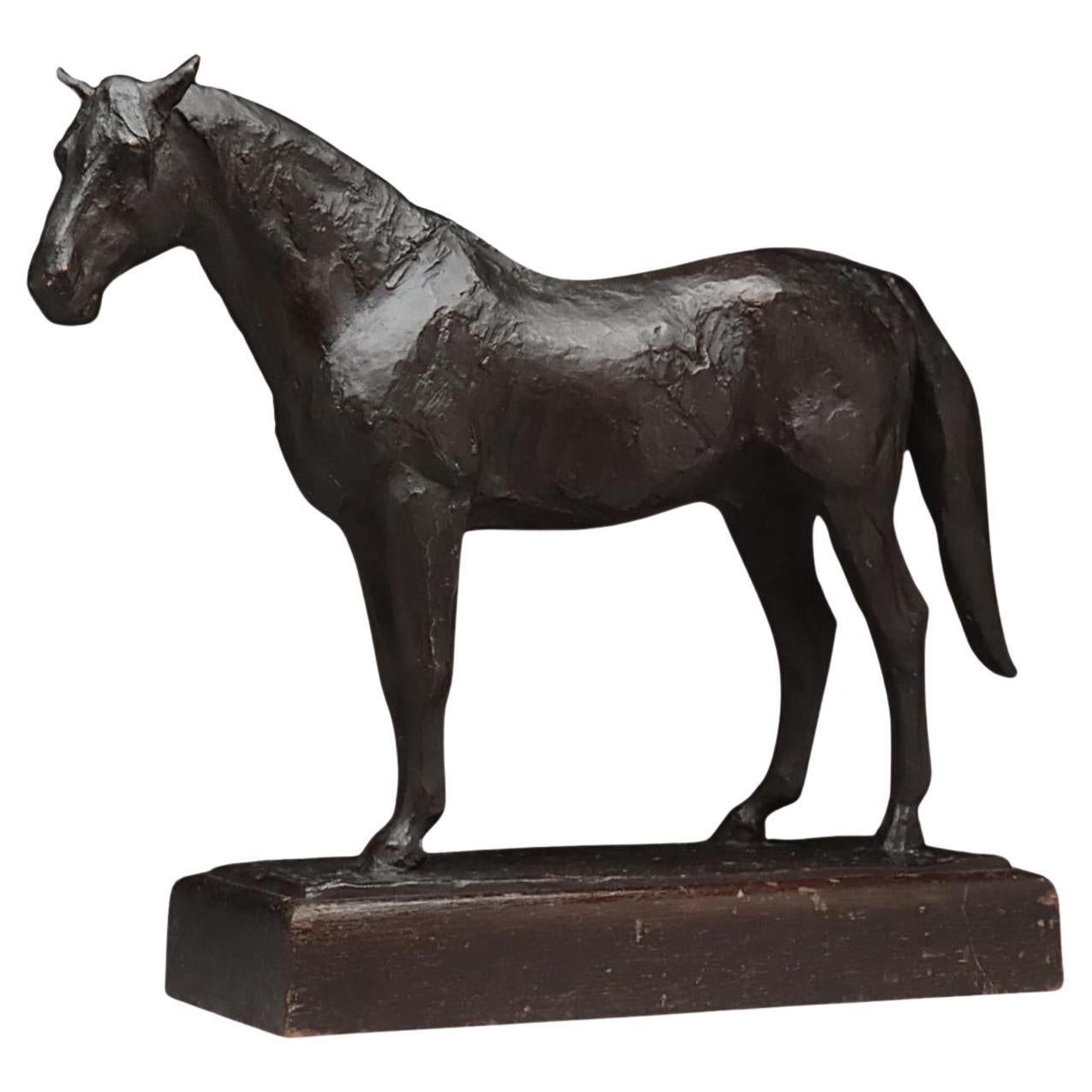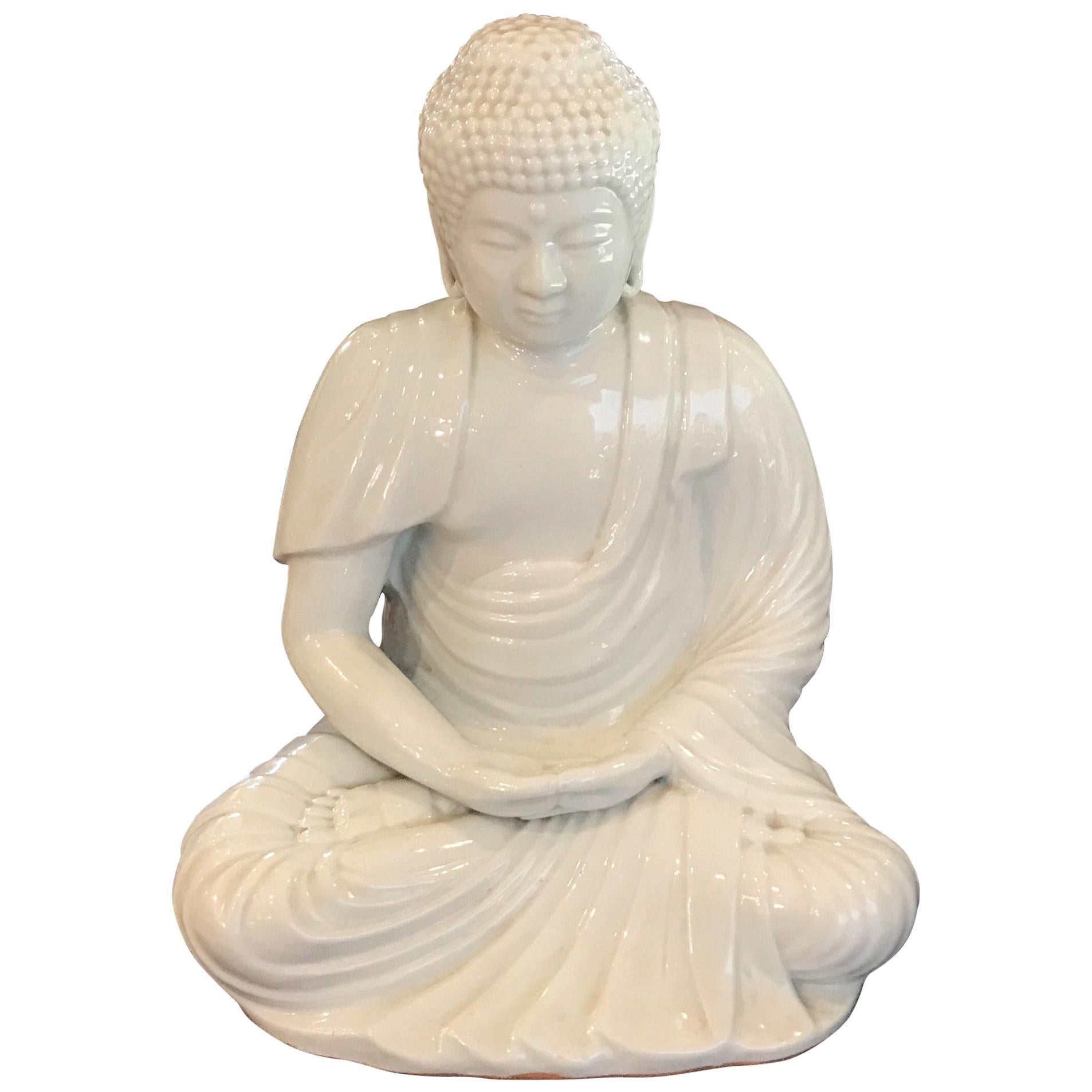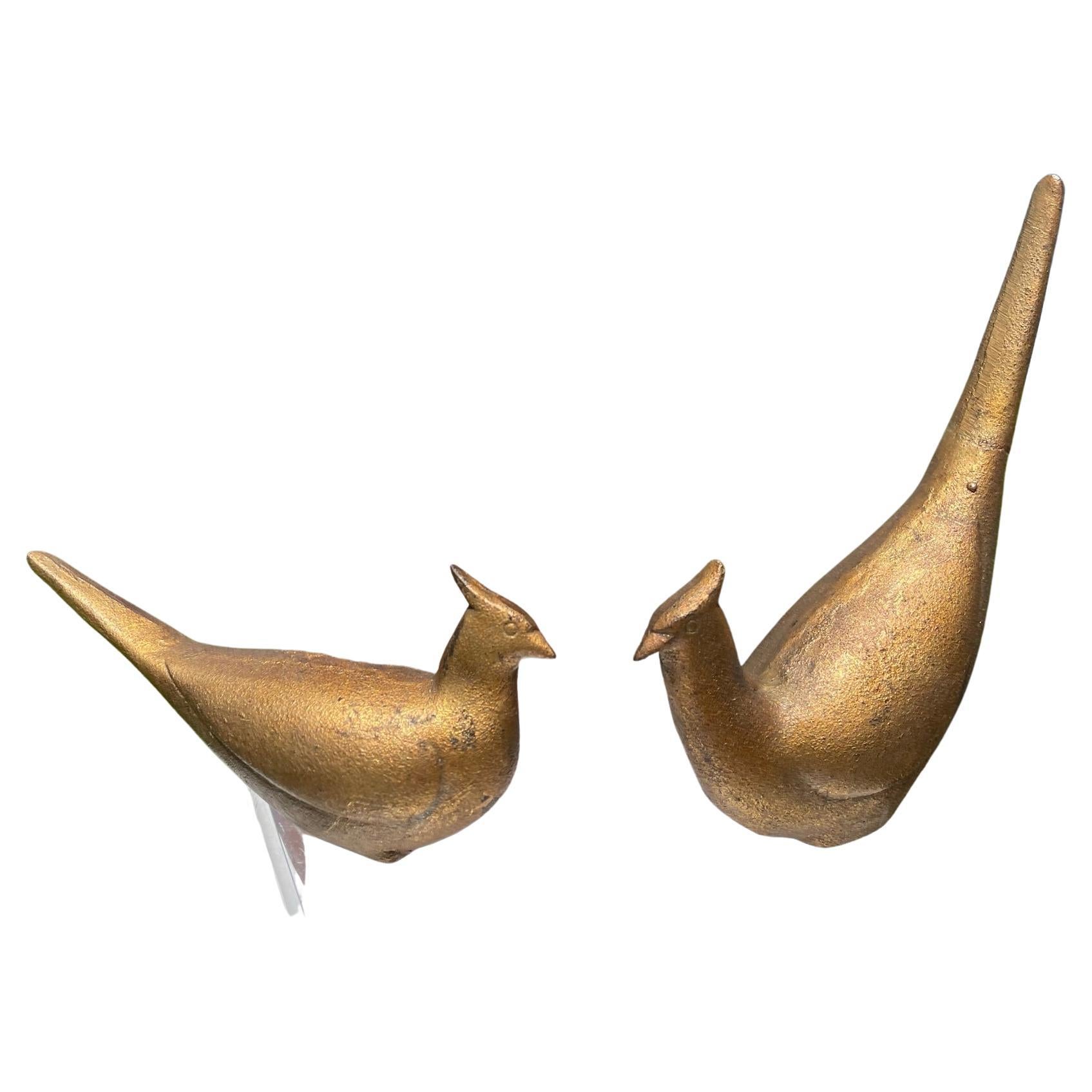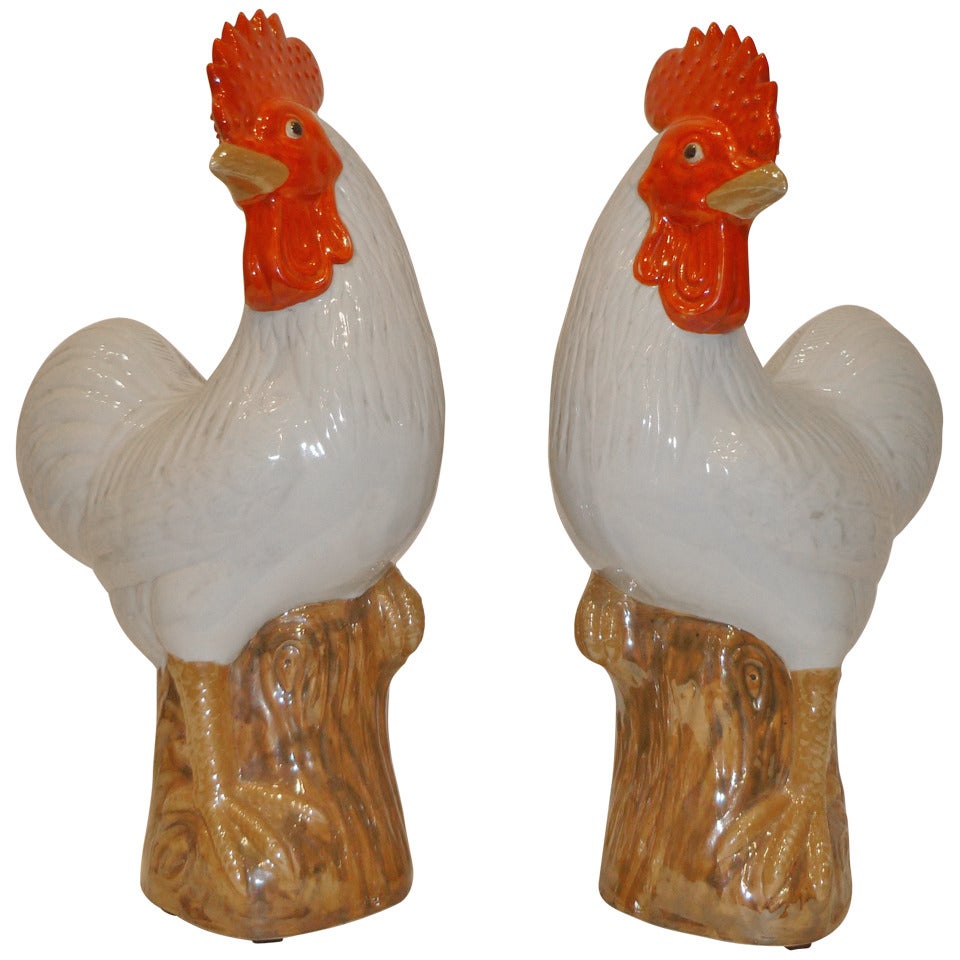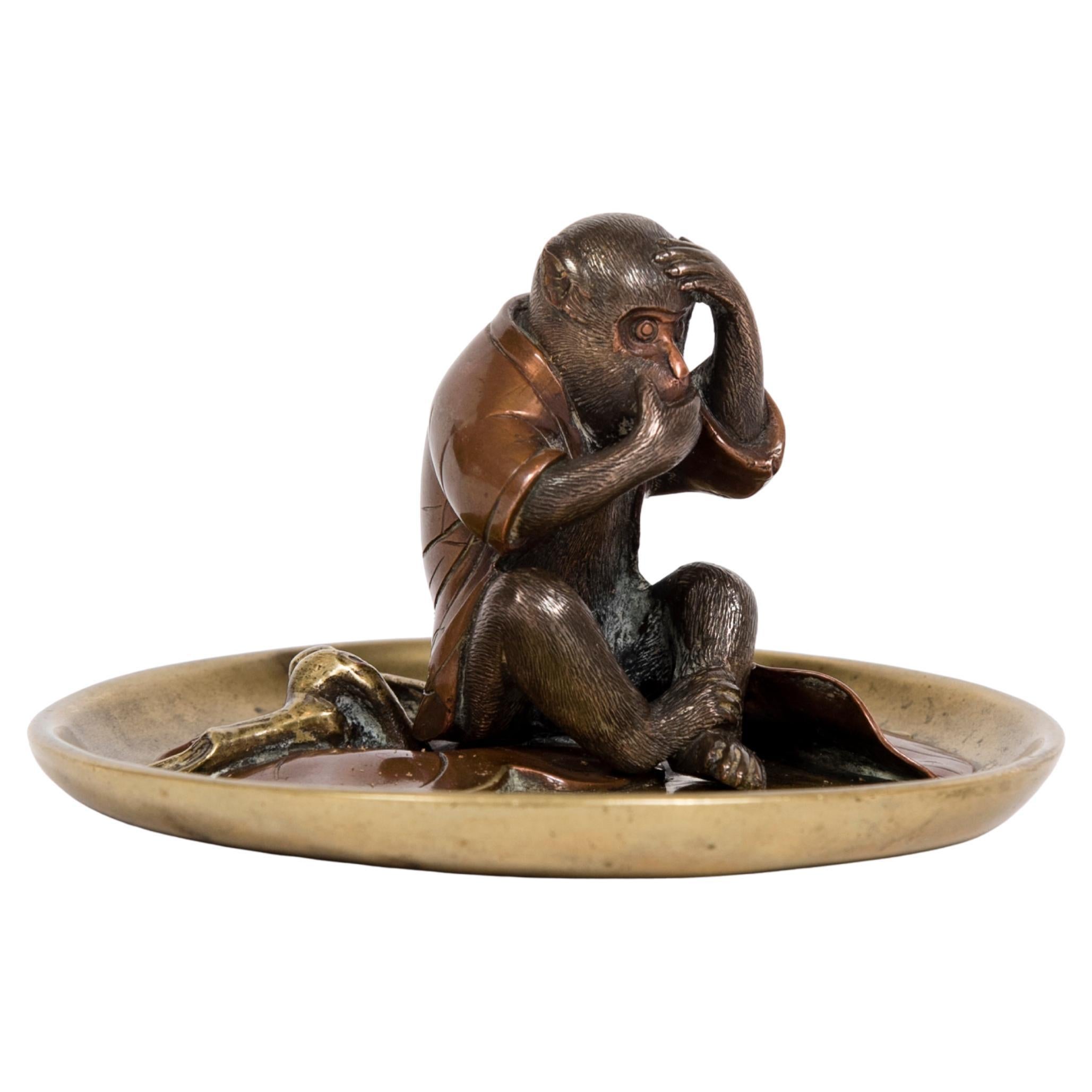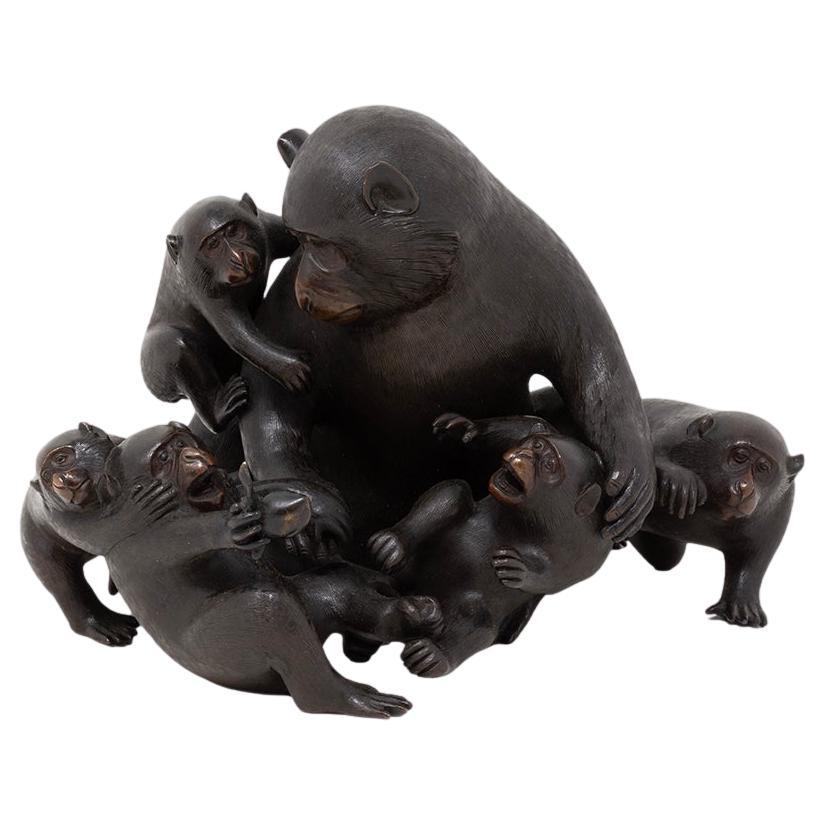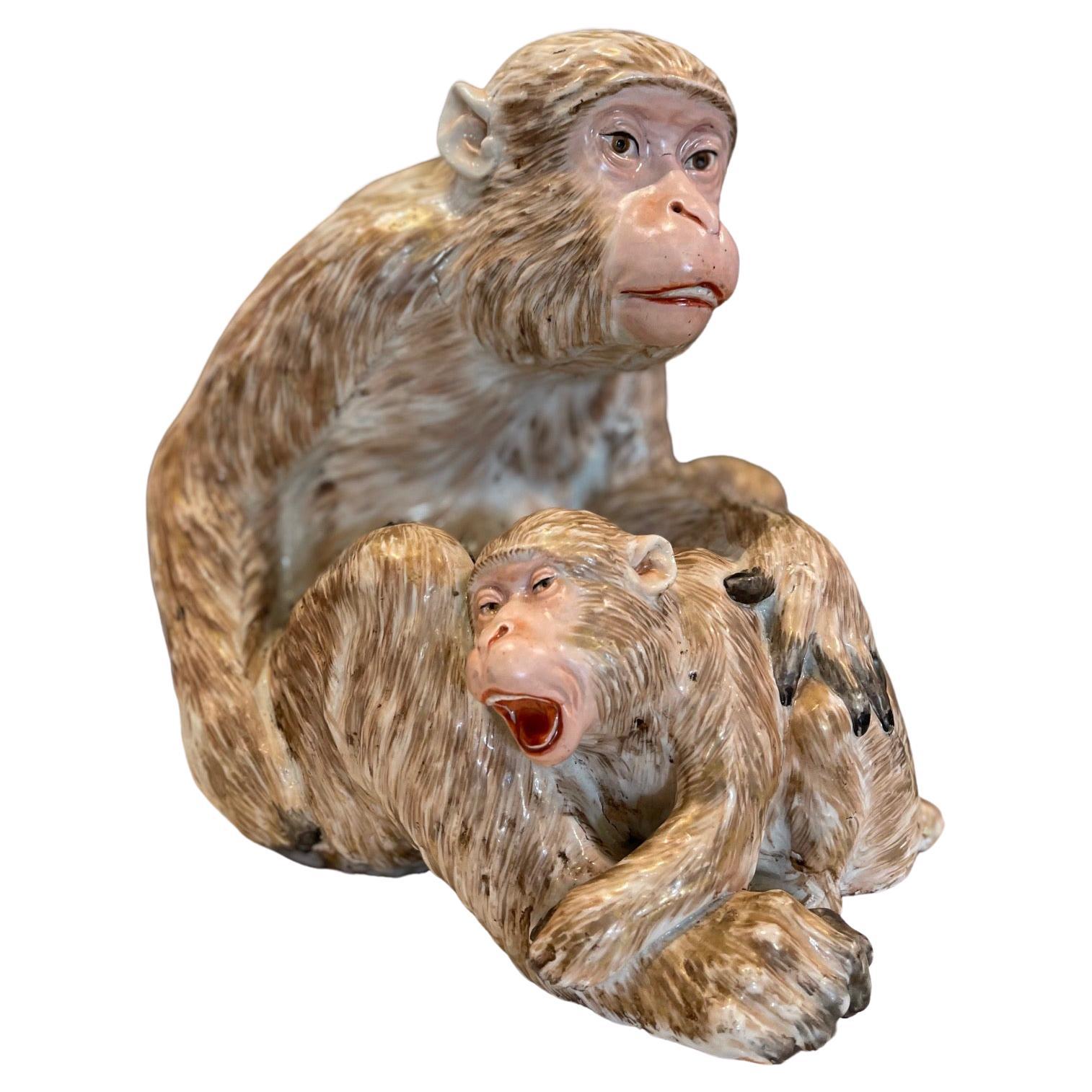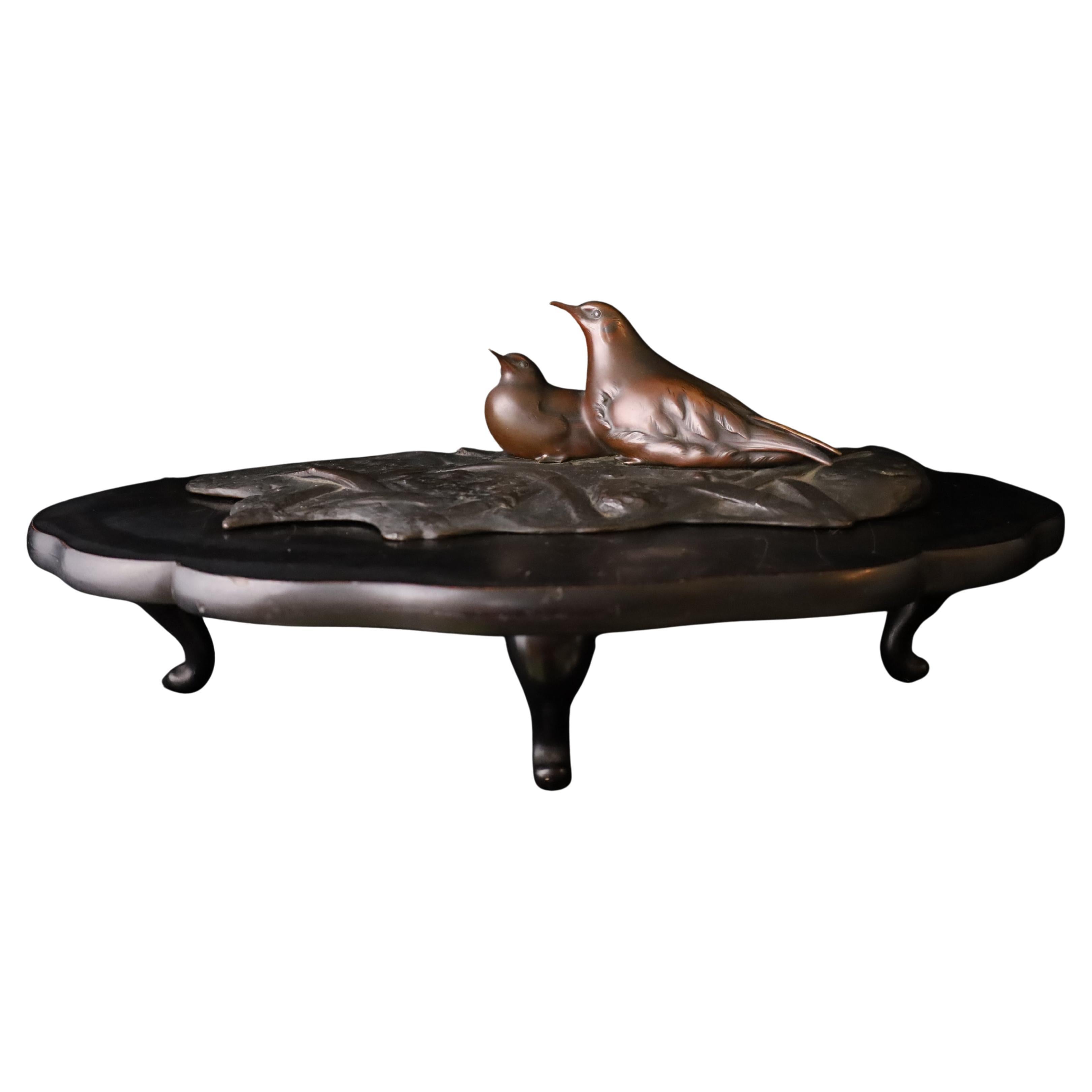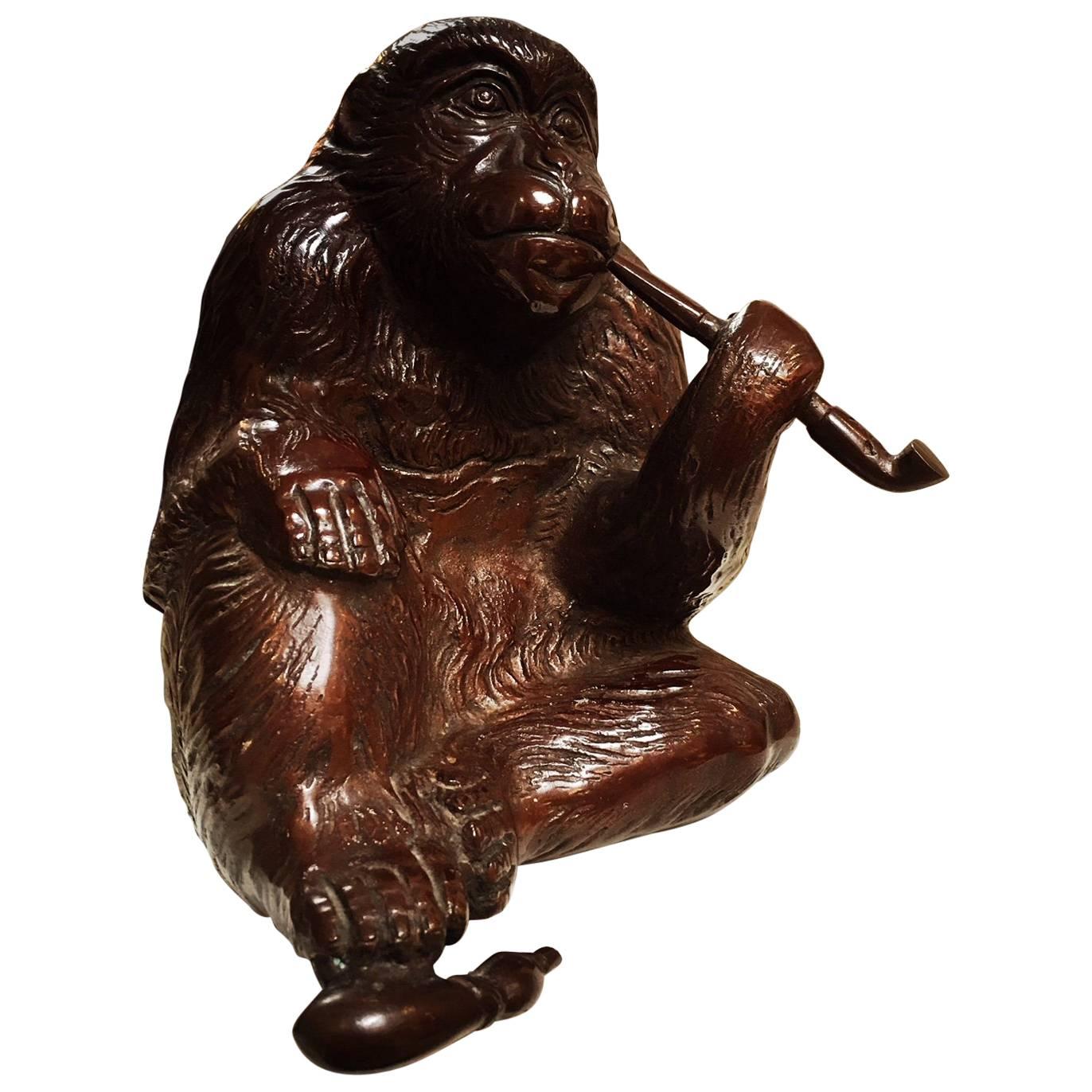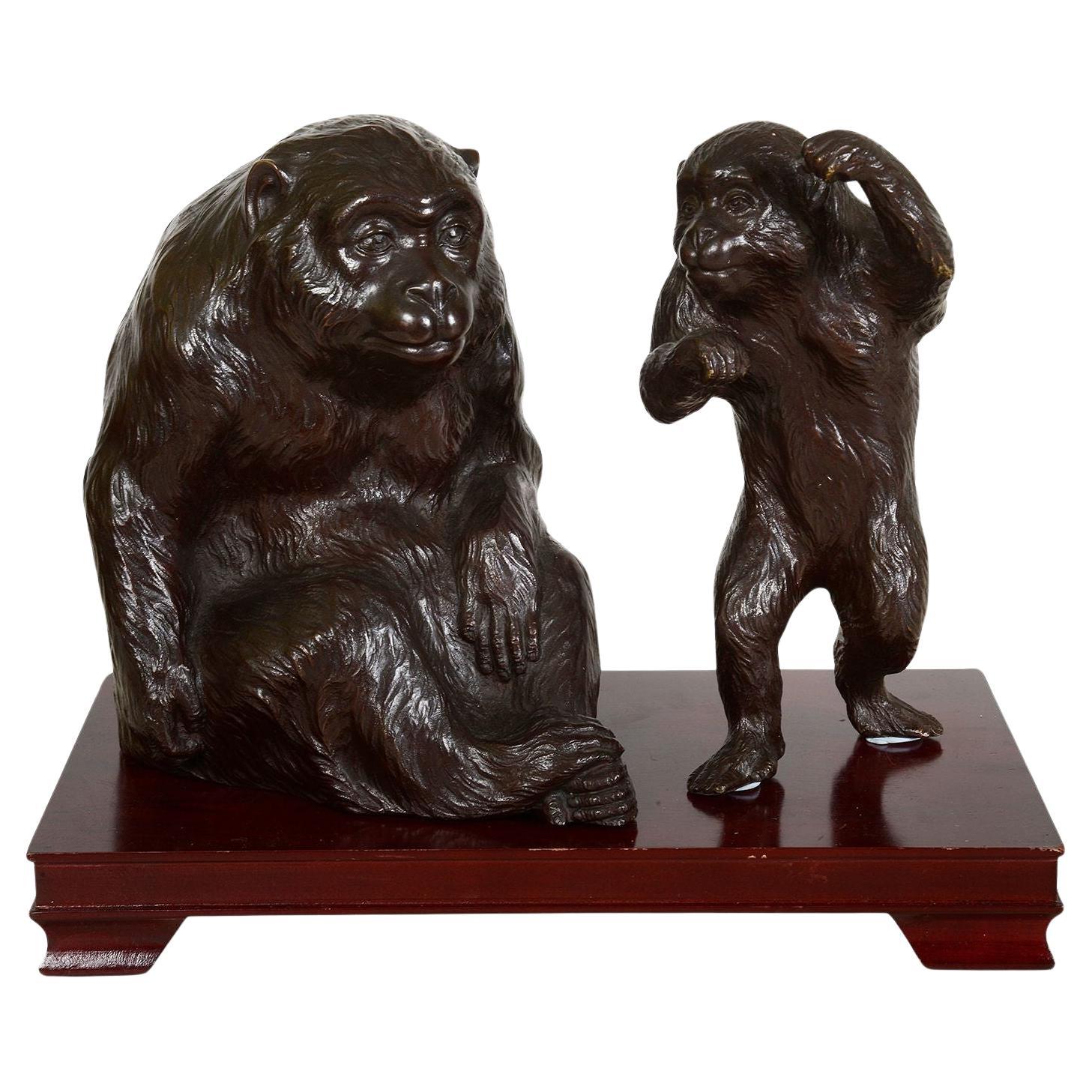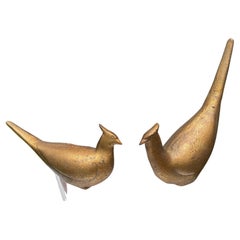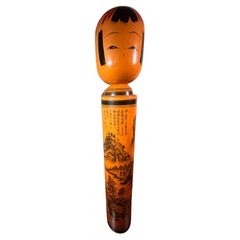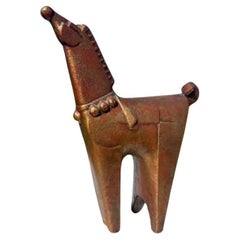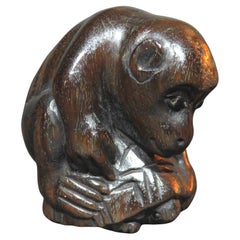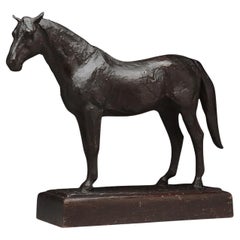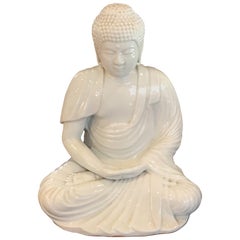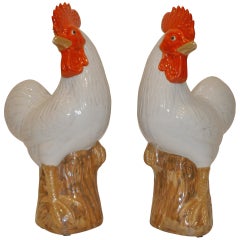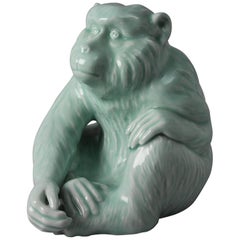
Japanese Blue Porcelain Monkey Sculpture Signed Fukugawa
View Similar Items
Want more images or videos?
Request additional images or videos from the seller
1 of 11
Japanese Blue Porcelain Monkey Sculpture Signed Fukugawa
Price:$540
$850List Price
About the Item
- Dimensions:Height: 7 in (17.78 cm)Width: 6 in (15.24 cm)Depth: 5.5 in (13.97 cm)
- Style:Showa (Of the Period)
- Materials and Techniques:
- Place of Origin:
- Period:
- Date of Manufacture:1960
- Condition:Wear consistent with age and use.
- Seller Location:South Burlington, VT
- Reference Number:1stDibs: LU128928110963
About the Seller
5.0
Platinum Seller
Premium sellers with a 4.7+ rating and 24-hour response times
Established in 1990
1stDibs seller since 2015
2,386 sales on 1stDibs
Typical response time: 1 hour
Authenticity Guarantee
In the unlikely event there’s an issue with an item’s authenticity, contact us within 1 year for a full refund. DetailsMoney-Back Guarantee
If your item is not as described, is damaged in transit, or does not arrive, contact us within 7 days for a full refund. Details24-Hour Cancellation
You have a 24-hour grace period in which to reconsider your purchase, with no questions asked.Vetted Professional Sellers
Our world-class sellers must adhere to strict standards for service and quality, maintaining the integrity of our listings.Price-Match Guarantee
If you find that a seller listed the same item for a lower price elsewhere, we’ll match it.Trusted Global Delivery
Our best-in-class carrier network provides specialized shipping options worldwide, including custom delivery.More From This Seller
View AllJapanese Pair Vintage Gilt Pheasant Bird Sculptures, Signed
Located in South Burlington, VT
Beautiful pair (2) old Japanese vintage gilt pheasant bird sculptures.
Marked Japan on bottoms.
From our recent Japanese acquisitions in original condition with original attractive gilding present.
Japan, an attractive and iconic pair (2) pheasant sculptures with original gilt patina. One is poised with vertical tail and thehy other in a seated horizontal position.
The pheasant is considered Japan's national bird.
This creative simple adaption makes a compelling contemporary pair of sculptures.
Fine original used condition with original gold gilt patina appropriate to their age.
Original gilt patina from age.
Dimensions: 7 inches tall and 6.5 inches wide
Photographed in natural day light.
Quality: Excellent quality and fine craftsmanship by Japanese specialized artisans
Provenance: authentic Japanese examples (see labels).
Lifetime guarantee of authenticity. All of our Asian works of art come with our lifetime authenticity guarantee.
About Japan's Green Pheasant
In Japanese culture, the green pheasant is unofficially considered the national bird of the country owing to its references in ancient folk tales of Japan. The green pheasant was said to be a messenger of the Sun Goddess...
Category
Mid-20th Century Japanese Showa Sculptures and Carvings
Materials
Iron
$156 Sale Price / set
47% Off
Japanese Extraordinary Tall 44 Inch Kokeshi Doll, Signed
Located in South Burlington, VT
Japan, a collector's dream and extraordinary monumental example of a 44 inch high one- of -a- kind handcrafted and hand painted wooden Kokeshi doll, circa mid-20th century.
Extraord...
Category
Mid-20th Century Japanese Showa Paintings and Screens
Materials
Wood
$1,200 Sale Price
20% Off
Japan Pair Antique Gilt Quail Sculptures Hand-Cast, Signed
Located in South Burlington, VT
Fine Pair (2) Quails In gilt finish with original signed labels JAPAN
Japan, a pair (2) of antique quail sculptures hand-cast, Taisho period.
Fine old carvings with traces of aged...
Category
Early 20th Century Japanese Taisho Sculptures and Carvings
Materials
Iron
Japanese Elegant Huge Horse Hand Cast, Gilt and Signed
Located in South Burlington, VT
Signed and in largest scale
Here's a beautiful and unique way to accent your indoor display space with this very unusual treasure from Japan.
This is a superb and attractive s...
Category
Mid-20th Century Japanese Showa Animal Sculptures
Materials
Iron
$300 Sale Price
49% Off
Japanese Big Antique Bronze Temple Bell With Pleasing Sound, Signed, 25"
Located in South Burlington, VT
Japanese Large 25" Tall Patinated Bronze Temple Bell With A Resonating Sound Guaranteed to Please You
The inscribed donor's Kanji script makes this bell special.
For your meditat...
Category
Early 20th Century Japanese Showa Sculptures and Carvings
Materials
Bronze
Japan Large Old Blue Bronze Lantern with Fine Details
Located in South Burlington, VT
Beautiful Blue Garden Lantern-
Only One left in this large size, 18 inches high.
Japan, a fine large vintage hand cast bronze Yukimi round top lantern with beautiful details from th...
Category
Mid-20th Century Japanese Showa Garden Ornaments
Materials
Bronze
$1,480 Sale Price
20% Off
You May Also Like
A Signed Japanese Netsuke of a Monkey Riding a Turtle, Showa Period
Located in Ottawa, Ontario
An amusing Showa Period (1926-1989) hand carved hardwood netsuke depicting a monkey riding atop a turtle, the eyes of the monkey inset with cabochon pupils, signed with etched charac...
Category
Mid-20th Century Japanese Showa Sculptures and Carvings
Materials
Hardwood
Bronze Horse Sculpture – Signed Takanoshi, Japan, 1933
Located in Fukuoka, JP
A striking bronze sculpture of a horse, signed Takanoshi and dated 1933, showcasing a bold yet contemplative depiction of the animal’s form. The surface is richly textured, emphasizi...
Category
20th Century Japanese Showa Sculptures and Carvings
Materials
Bronze
Antique Japanese Blanc de Chine Buddha
Located in Lambertville, NJ
A blanc de chine porcelain figure of the Buddha, Japanese, Kutani, circa 1900.
Category
Antique Early 1900s Japanese Meiji Sculptures and Carvings
Materials
Porcelain
$750 / item
A Pair of Fine Porcelain Rooster Statues
Located in Greenwich, CT
A pair of fine porcelain rooster statues, lively modeled, beautiful colors and lines,
Category
Late 20th Century Chinese Qing Porcelain
Materials
Porcelain
$2,800 / set
Japanese Monkey Suaka
Located in PARIS, FR
Bronze sculpture of a monkey laying on a golden brass tray adorned with copper
leaves. This sculpture is made of sentoku and shibuchi bronze with a very interesting
suaka patina.
...
Category
Antique Late 19th Century Japanese Sculptures and Carvings
Materials
Bronze
$2,156
Japanese Meiji Period Bronze Monkey Group Sculpture Okimono Shosai
Located in Newark, England
Featuring Seven Japanese Macaques
Form our Japanese collection, we are delighted to offer this Japanese Bronze Monkey Group by Shosai. The Japanese Bronze Group displaying a male father monkey and his infants playing around and being mischievous with Persimmon fruit. The monkeys modelled as Japanese macaque monkeys (snow monkey). The bronze okimono is beautifully patinated with a highly lifelike and naturalistic casting signed to the underside Shosai 正齊鋳. The Bronze group dates to the Meiji Period (1868-1912) circa 1885.
Japanese macaque (snow monkey) is a terrestrial Old World monkey species that is native to Japan. They are known as snow monkeys because some live in areas where snow covers the ground for long periods each year hence their nickname. No other non-human primate lives further north or in a colder climate than the snow monkey. Individuals have brownish grey fur, pinkish-red faces, and short tails. Two subspecies are known and their conservation Status is of least concern. In Japan, the species is known as Nihonzaru ニホンザル, 日本 (Japan/Nihon) and saru 猿 (monkey) to distinguish it from other primates, but the Japanese macaque is the only species of monkey in Japan.
The Japanese macaque features heavily in the religion, folklore, and art of Japan, as well as in proverbs and idiomatic expressions in the Japanese language. They are often seen in paintings, block prints and represented in all manner of carvings from Okimono to netsuke. Many of these art forms reside in the world’s most famous museums and collections, some of the most prominent pieces by artists such as Mori Sosen and Kawanabe Kyosai. In Shinto belief (Japan’s indigenous religion/nature religion) legendary mythical beasts known as raiju sometimes appeared as monkeys and kept Raijin (the god of lightning/storms) company. In another well known tale the three wise monkeys who warn people to “see no evil, hear no evil and speak no evil” can be seen depicted in relief over the door of the famous Tosho-gu shrine in Nikko.
Meiji Period was an era of Japanese history that spanned from 1868 to 1912. It was the first half of the Empire of Japan, when the Japanese people began to build a paradigm of a modern, industrialised nation state and emergent great power, influenced by Western countries and aesthetics. As a result of radically different ideas, the changes to Japan were profound and it affected the social structure, politics, economy, military, and foreign relations across the board. The period corresponded to the reign of Emperor Meiji and was preceded by the Keio era and was succeeded by the Taisho era.
Cultural Art during the Meiji Period was of particular interest to the government and they overhauled the art export market which in turn promoted Japanese arts via various world’s fairs, beginning in Vienna at the world fair in 1873. The government heavily funded the fairs and took an active role organising how Japan’s culture was presented to the world including creating a semi-public company named Kiritsu Kosho Kaisha (First Industrial Manufacturing Company). The Kiritsu Kosho Kaisha was used to promote and commercialise exports of Japanese art and established the Hakurankai Jimukyoku (Exhibition Bureau) to maintain quality standards. For the 1876 Centennial International Exhibition in Philadelphia, the Japanese government created a Centennial Office and sent a special envoy to secure space for the 30,000 items that would be displayed. The Imperial Household also took an active interest in arts and crafts, commissioning works by select artists to be given as gifts for foreign dignitaries further emphasising the high quality and importance of Japanese art. Just before the end of the 19th century in 1890, the Teishitsu Gigeiin (Artist to the Imperial Household) system was created to recognise distinguished artists. These artists were selected for their exceptionally high quality wares and talent in their own industry. Over a period of 54 years Seventy artists were appointed, amongst these were ceramicist Makuzu Kozan and cloisonné enamel artist...
Category
Antique Late 19th Century Japanese Meiji Sculptures and Carvings
Materials
Bronze
Recently Viewed
View AllMore Ways To Browse
Monkey Screen
Japanese Fukagawa
Japanese Fukagawa Porcelain
Monkey Pottery
Monkey Ornament
White Monkey Porcelain
Chinese Porcelain Lantern
Antique Okimonos
Asian Jade Buddha Sculpture
Japanese Jade Sculptures
Jade Monkey
Fukagawa Arita
Tsukubai Japanese Stone Basin
Monkey Ceramic Japanese
Japanese Monkey Screen
Fukagawa Seiji
Fukagawa China
Vintage Japanese Ornaments
